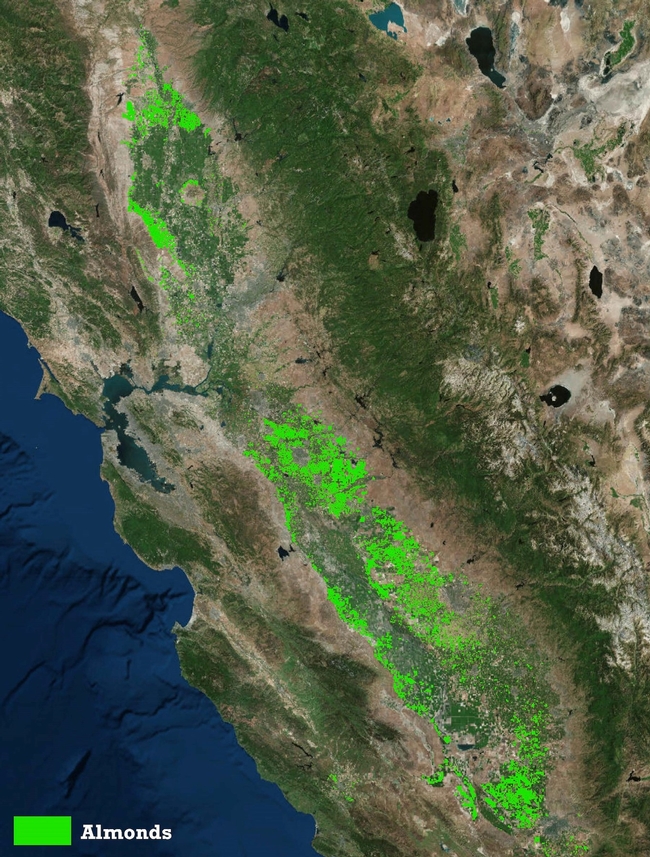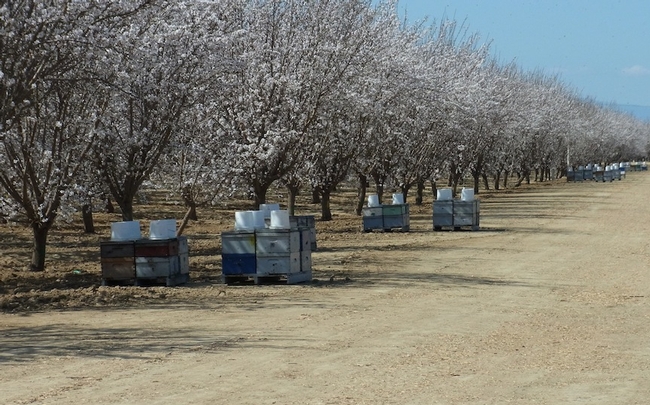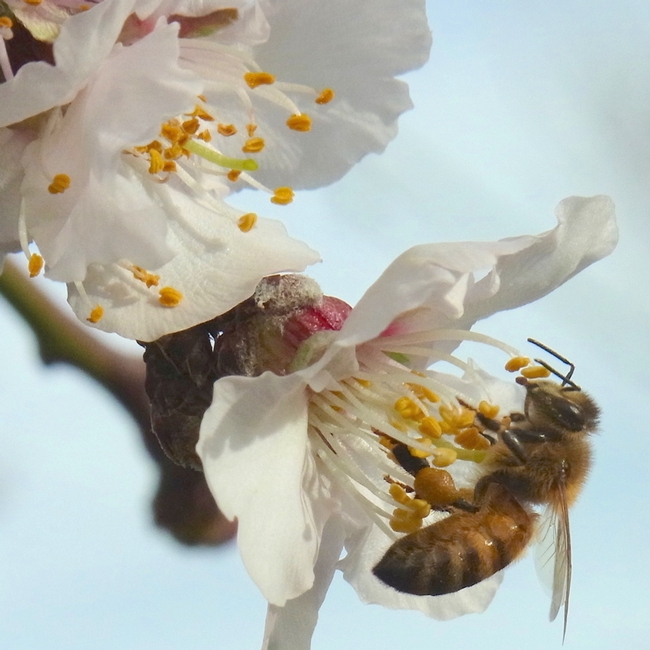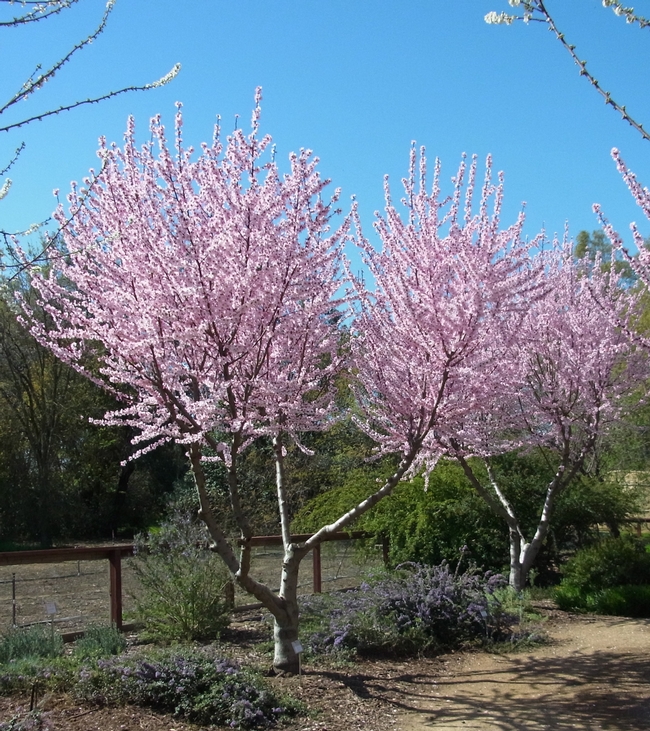One of California's most important specialty crops is almonds; in 2016 the state's crop was worth $5.2 billion. Our climate is ideal for almond production, and as a result we grow more than 80% of the world's supply. California's almond acreage has been increasing steadily as the market for almonds continues to grow, and has nearly doubled since 2005. This increasing demand has a tremendous impact on the nation's migratory beekeepers: the flower is self-infertile, so pollen must be transferred between plants by bees for nuts to be produced. Simply put: no bees, no almonds.


Two honey bee hives per acre of almond trees is required for good pollination. To fill this need, migratory beekeepers from all over the US bring their hives to California for almond bloom. Trees are at their peak bloom right now, and the girls are hard at work throughout the state. While bees obtain both pollen and nectar from almond flowers, the pollen is high in protein and provides healthy bee forage, which can give bees a good start to the year.
Why is there such a demand for almonds? They are also a healthy food for us! They are high in protein and monounsaturated fat and contain a number of vitamins and minerals.

Honey bee hives are often left in orchards for a month or more before and after almond bloom. While many growers understand the importance of alternative sources of forage in their orchards, if you live within flight distance of an orchard – 3 to 5 miles – your garden can help.
There are many options for winter-blooming plants to help bees in your home orchard or nearby commercial orchards. These include manzanitas, currants, native wildflowers, and ceanothus. 